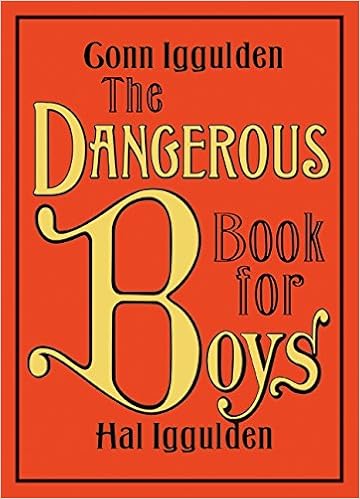By Craig Davis, Steven R. Harris
Those are Adobe Clearscan PDF documents generated from six hundred dpi scans of the Kaplan USMLE Step 1 Lecture Notes which have been allotted to scholars in Kaplan clinical prep classes in 2014.
The following preface references 7 volumes. This includes in simple terms the Pharmacology volume.
These 7 volumes of Lecture Notes symbolize the most-likely-to-be-tested fabric at the present USMLE Step 1 examination. Please be aware that those are Lecture Notes, now not evaluate books. The Notes have been designed to be observed by means of school lectures dwell, on video, or on the net. analyzing them with out getting access to the accompanying lectures isn't really a good way to study for the USMLE.
To maximize the effectiveness of those Notes, annotate them as you hearken to lectures. To facilitate this technique, we've created huge, clean margins. whereas those margins are sometimes punctuated by way of college high-yield "margin notes:' they're, for the main half, left clean in your notations.
Many scholars locate that previewing the Notes ahead of the lecture is a really effective method to organize for sophistication. this lets you expect the parts the place you'll have to pay specific realization. It additionally provides you the chance to map out how the knowledge goes to be offered and what kind of research aids (charts, diagrams, etc.) you'll want to upload. This approach works whether you're attending a dwell lecture or looking at one on video or the web.
Finally, we wish to pay attention what you think that. What do you're keen on in regards to the Notes? What may be more advantageous? Please percentage your suggestions via e-mailing us at med.feedback@ kaplan.com.
Thank you for becoming a member of Kaplan scientific, and better of good fortune in your Step 1 exam!
Kaplan scientific
Preview of Kaplan Medical USMLE Step 1 Lecture Notes: Pharmacology (2013) PDF
Best Reference books
Escaping into the Open: The Art of Writing True
“Crystal transparent, bracing as ice water, Escaping Into the Open will be learn through all scribblers despite fabric good fortune. ”—Rita Mae Brown“This is a truly stable e-book. ”—BooklistBestselling, award-winning novelist Elizabeth Berg is aware something or approximately writing, having graced the realm with terrific works of fiction together with speak prior to Sleep, The yr of Pleasures, and the acclaimed Oprah ebook membership choice, Open condo.
The bestselling publication for each boy from 8 to 80, masking crucial boyhood abilities equivalent to development tree houses*, studying find out how to fish, discovering precise north, or even answering the age previous query of what the large care for ladies is. during this electronic age there's nonetheless a spot for knots, skimming stones and tales of marvelous braveness.
Dictionary of Architecture and Construction
The main entire architecture/construction dictionary on hand. For the broadest attainable assurance of phrases that make up the fundamental language of structure and building, glance no extra than Dictionary of structure & development, 3rd variation. largely revised, up-to-date, and accelerated by means of editor Cyril M.
The Penguin Atlas of Ancient History
Lines the migrations and evolution of the races in addition to the improvement of civilizations from prehistoric occasions to the fourth century A. D.
- Deep-Sky Companions: The Messier Objects
- A Dictionary of Modern and Contemporary Art (2nd Edition)
- A Dictionary of Medieval Terms and Phrases
- The Crusades: Almanac (Crusades Reference Library)
- The Audio Expert: Everything You Need to Know About Audio
Additional resources for Kaplan Medical USMLE Step 1 Lecture Notes: Pharmacology (2013)
Antagonism and Potentiation • Graded dose-response curves additionally supply information regarding antago nists-drugs that have interaction with receptors to intrude with their activa tion via agonists. keep watch over a hundred Q) (/) c zero Q. (/) Q) a: #Log dose of drug Compe titive j determine 1-2-4. D-R Curves of Antagonists and Potentiators • Bridge to Biochemistry Parallels among Receptor Antagonists and Enzyme Inhibitors Pharmacologic antagonism (same receptor) aggressive antagonists are analogous - aggressive antagonists: to aggressive inhibitors; they reduce ° reason a parallel shift to the perfect within the D-R curve for agonists ° may be reversed by way of zero seems to be to i the dose of the agonist drug . J, the efficiency of the agonist affinity (i Km) reaction yet no longer maximal (Vmax is still the same). Noncompetitive antagonists reduce V max yet don't switch the Km. � clinical 21 Section I • basic rules - Noncompetitive antagonists: • ° reason a nonparallel shift to the proper ° should be in basic terms in part reversed by way of zero seem to i the dose of the agonist J, the efficacy of the agonist Physiologic antagonism (different receptor) - agonists with opposing motion antagonize one another - instance: a vasoconstrictor with a vasodilator • Chemical antagonism: - Formation of a fancy among effector drug and one other compound - instance: protamine binds to heparin to opposite its activities • Potentiation - reasons a parallel shift to the left to the D-R curve - looks to i the efficiency of the agonist QUANTAL (CUMULATIVE) D-R CURVES • those curves plot the proportion of a inhabitants responding to a speci fied drug impression as opposed to dose or log dose. they allow estimations of the median powerful dose, or powerful dose in 50% of a population-EDSO. • Quantal curves can display the diversity of intersubject variability in drug reaction. Steep D-R curves mirror little variability; flat D-R curves indi cate nice variability in sufferer sensitivity to the consequences of a drug. Toxicity and the healing Index (Tl) • Comparisons among EDSO and TDSO values allow review of the relative protection of a drug (the healing index), as could comparability among EDSO and the deadly median dose (LDSO) if the latter is understood. TI TDSO = EDSO or LDSO EDSO healing a hundred poisonous OJ c "O c g_ (/) Q) 50 a: ct. 2 four 6 eight 10 mg/kg determine 1-2-5. Quantal 0-R Curves of healing and poisonous results of a Drug 22 � scientific Chapter 2 • • Pharmacodynamics As proven in determine 1-2-5, those D-R curves is additionally used to teach the connection among dose and poisonous results of a drug. The median poisonous dose of a drug (TD50) is the dose that explanations toxicity in 50% of a popu lation. • • From the knowledge proven, TI= 10/2 = five Such indices are of such a lot worth whilst toxicity represents an extension of the pharmacologic activities of a drug. they don't are expecting idiosyncratic reactions or drug allergic reaction. SIGNALING MECHANISMS: different types of DRUG RESPONSIVE SIGNALING MECHANISMS • Binding of an agonist drug to its receptor prompts an effector or sign • numerous types of drug-responsive signaling mechanisms are ing mechanism.





